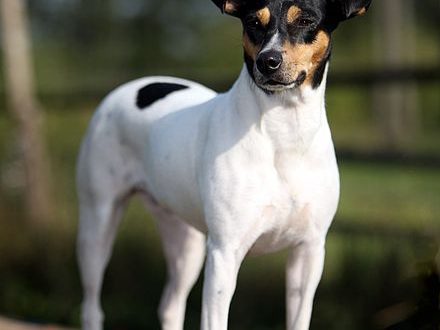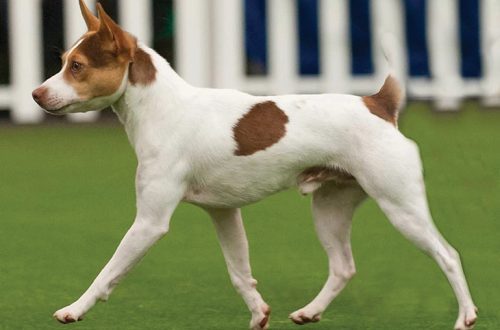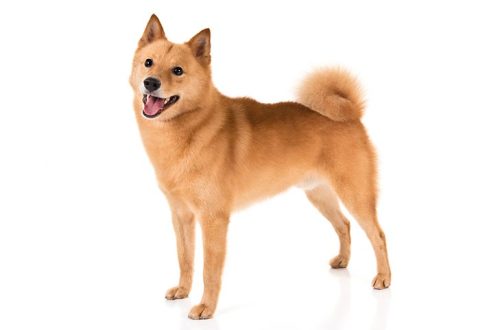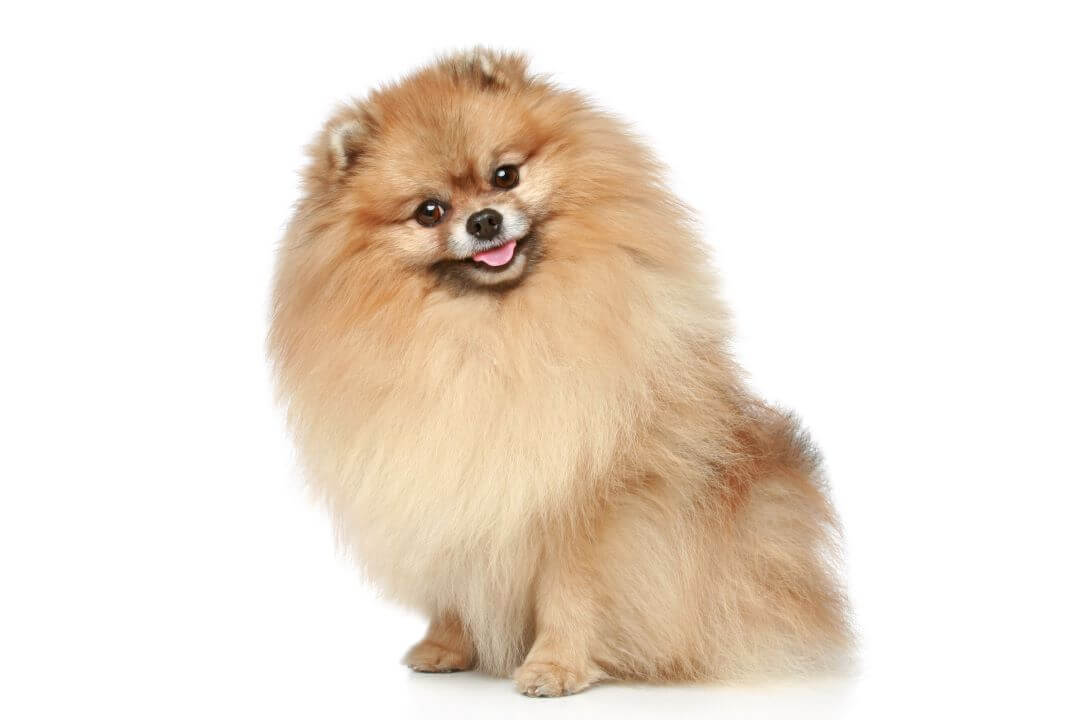
Pomeranian
Other names: Pomeranian , German Pomeranian , Zwergspitz , Miniature Spitz
The Pomeranian looks like a child’s toy. This fluffy kolobok will become a true friend and will brighten up the most cloudy day with a ringing bark.
Contents
- Characteristics of Pomeranian
- Basic moments
- History of the Pomeranian breed
- Video: Pomeranian
- Appearance of the Pomeranian
- Photo of an adult Pomeranian
- The nature of the Pomeranian
- Education and training
- Care and maintenance
- Health and disease of the Pomeranian
- How to choose a puppy
- Photo of pomeranian puppies
- How much does a pomeranian cost
Characteristics of Pomeranian
| Country of origin | Germany |
| The size | miniature |
| Growth | 22-30 cm at the withers |
| Weight | from 2 to 3 kg |
| Age | 12–15 years old |
| FCI breed group | spitz and breeds of primitive type |
Basic moments
- The Pomeranian easily finds a common language with the owner, for whom he feels boundless love and loyalty.
- This is a wonderful friend and companion for conscious children. It is better to refrain from buying an animal for younger pranksters.
- It is distinguished by excellent watchdog qualities and a loud “bell” notifies of the arrival of an unexpected guest.
- Not suitable for keeping in an aviary or on a chain. An apartment or a country house is an ideal place.
- The Pomeranian needs careful and regular grooming, active rest and long walks. Before you start a representative of this breed, you should soberly assess your strengths.
- Dogs love to bark, which pretty much bothers their neighbors, and often their own owners.
- With the weak character of the owner, the Spitz tends to show dominance and stubbornness, which are not easy to cope with.
- The breed is not suitable for beginner dog breeders.
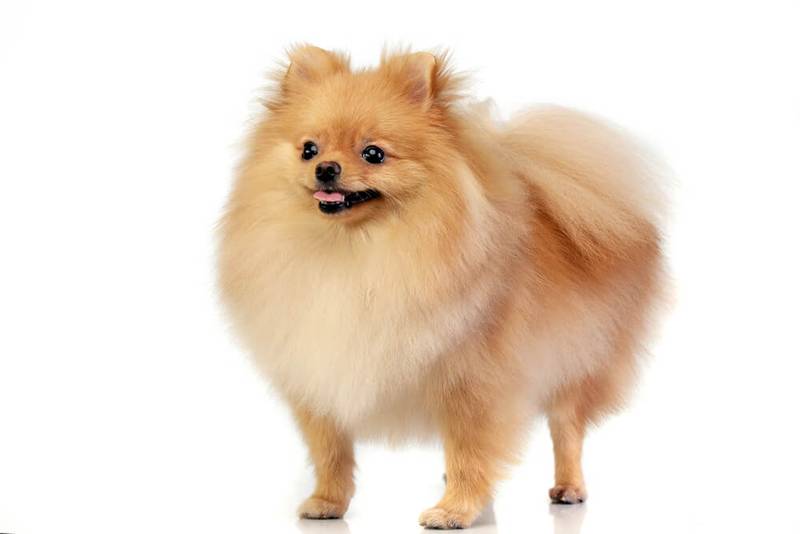
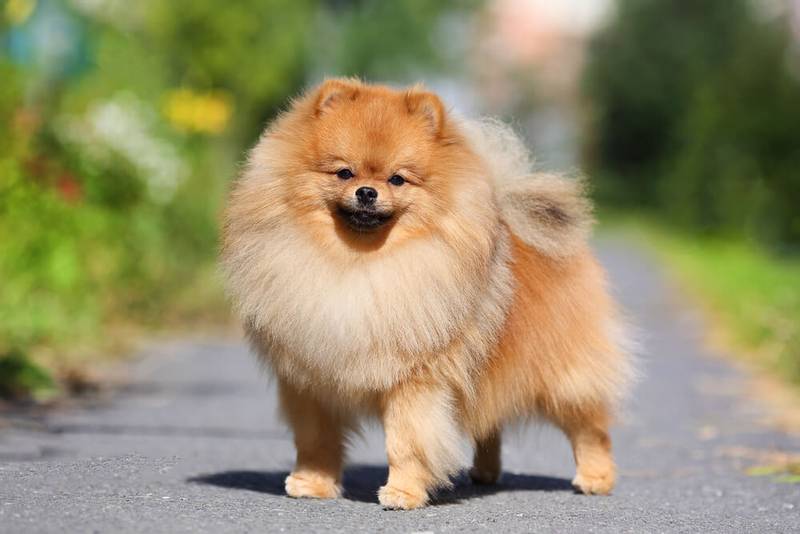
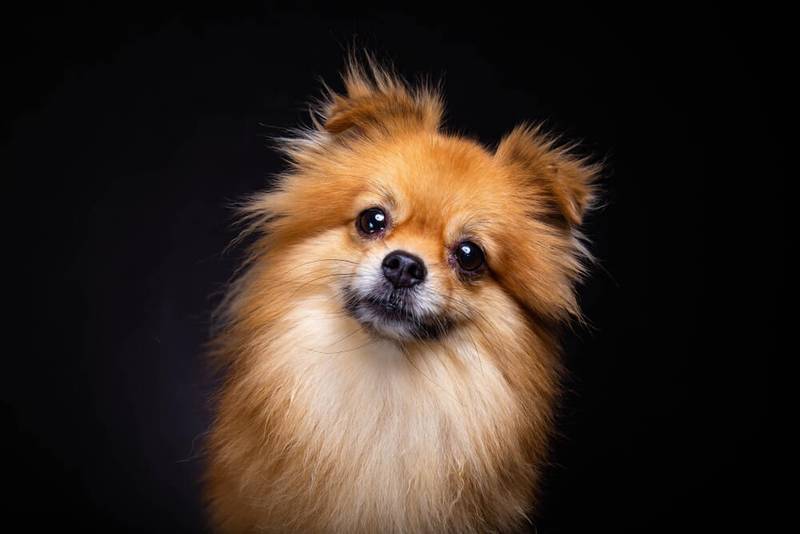
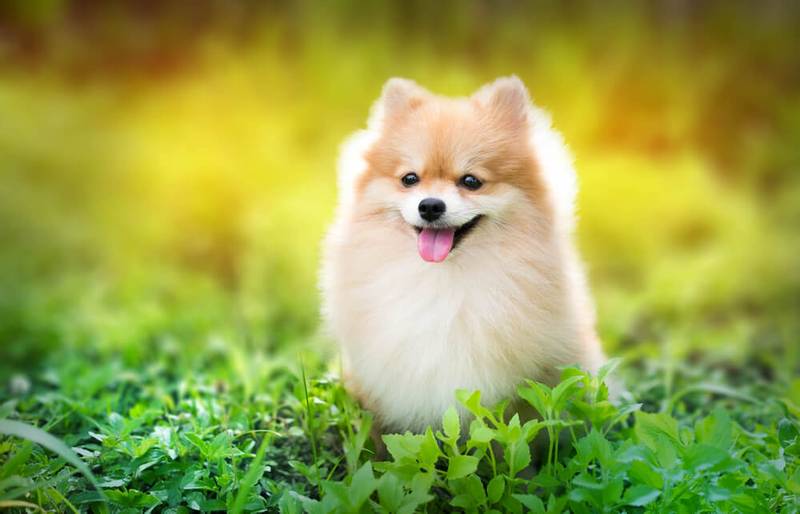
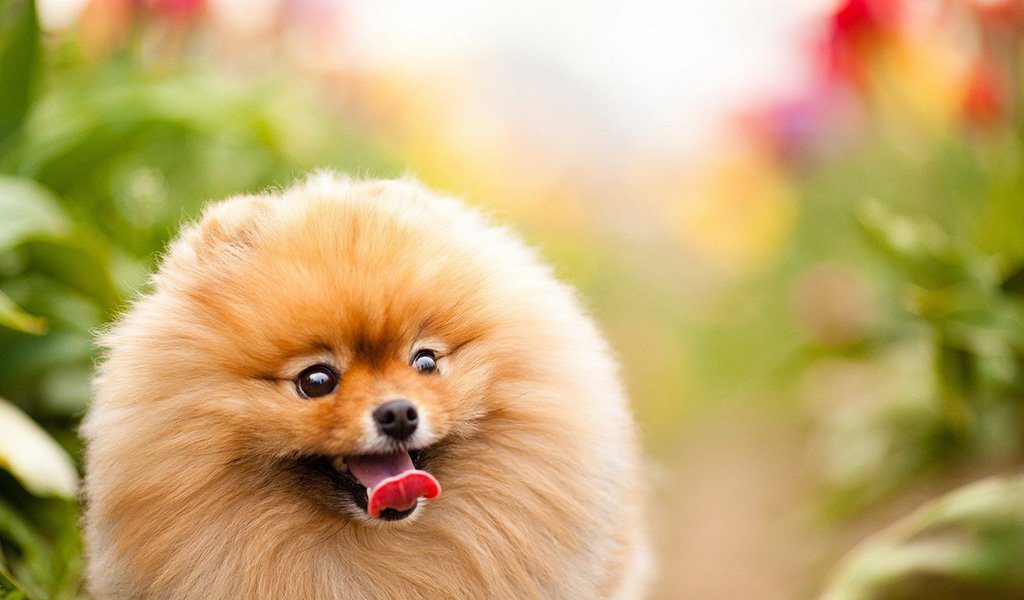
The Pomeranian is a tiny fidget with a pretty face, who cannot imagine life without active walks in the fresh air. The breed combines remarkable intelligence and temperamental character of large relatives. This teddy bear will fearlessly rush to your defense if it sees an enemy in a random passerby. Despite loyalty and love, the Pomeranian will not sit at the feet of the owner for a long time. For him, lying in the foliage and throwing out energy in an active game is much more interesting.
History of the Pomeranian breed
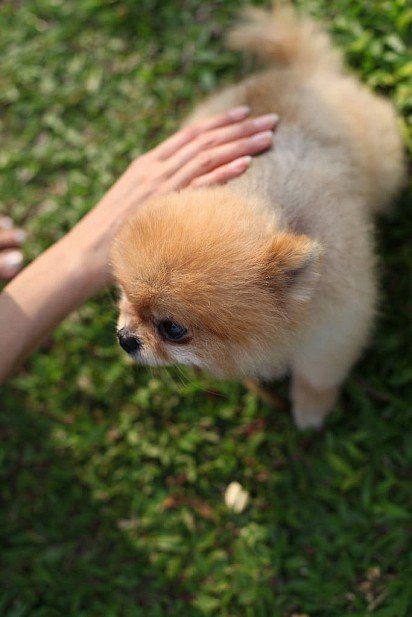
Looking at a ball comfortably curled up in an armchair, it is hard to imagine that his ancestors were several times larger and lived in the territory of modern northern European countries. Evidence of this are archaeological burials of the Neolithic era. The so-called peat dogs were used for locomotion, thanks to their stamina and strength. It is worth noting that this method is still widespread in Iceland and Lapland. In the southern territories, these dogs were bred to guard ships in ports or property. The era of the Middle Ages radically changed the attitude towards them: a pretty appearance and indomitable energy earned the love of the European aristocracy. Increasingly, noble ladies and august persons appeared at social events in the company of a four-legged companion.
Sincere interest in the breed from which the Pomeranian originated was the first to be shown by the inhabitants of Germany. It was here that Spitzkhund dogs began to be bred, which by the 18th century had spread throughout the medieval state. For a long time, cynologists could not come to an agreement: where did the Pomeranian come from? The laurels passed either to the German city of Württemberg, the center of dog breeding, or to Pomerania, a Prussian province. Many experts have made bold statements comparing Spitz with dogs that lived in China, Ancient Egypt and Greece. As a result, the right to be considered the birthplace of this breed was assigned to Pomerania.
The first individuals weighed about 15 kilograms and were larger than modern oranges. Wanting to make the breed more compact, German dog breeders selected the smallest specimens for breeding. This business was continued in England, where the Pomeranian “played” with new colors.
Queen Victoria played an important role in the recognition of the breed. Like many before, she could not resist the charm of Marco, a Pomeranian who met the queen in Florence and soon went with her to England. Over time, this made the breed popular. Repeated victories of royal Spitz at various shows and exhibitions aroused the desire of the townspeople to acquire the same charming pets. At the end of the 19th century, the Pomeranian was recognized as a breed awarded a separate dog breeders’ club. It consisted mainly of noble ladies, many of whom later founded the first nurseries, where they bred and kept Pomeranians, often of a certain color. For example, one of the nurseries was famous for animals with cream and white coats, while in another one could find specimens of black shades.
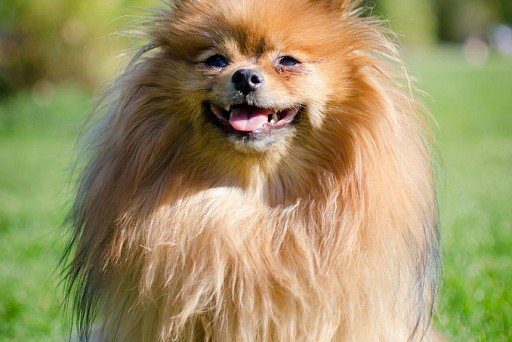
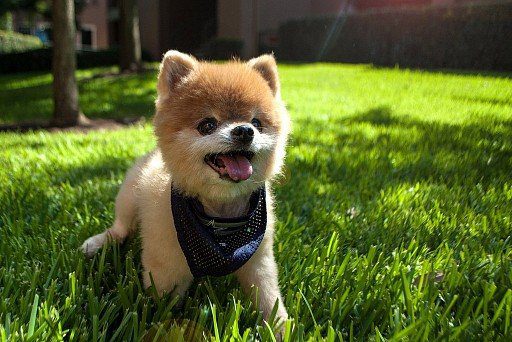
The efforts of English dog breeders made it possible to change the size of the Pomeranian, which became much smaller in comparison with their German relatives. All animals were divided into two groups: individuals weighing less than or more than seven pounds (about 3.1 kilograms). As a result of many years of selection, English Pomeranians have become the standard that breeders from all over the world tried to match. However, to this day, it is precisely those from Pomerania that remain the smallest of the Spitz.
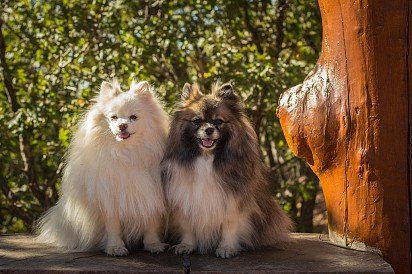
Back in 1892, this breed conquered the inhabitants of America, where the dogs were brought from English kennels. Despite the fact that the Pomeranian was not recognized by the American Kennel Club (AKC) – a well-known canine organization that still exists – the animals immediately fell in love with their enthusiasm, playful behavior and, of course, silky coat. Everything changed with the beginning of the 20th century, when the founding of the American Pomeranian Club put an end to the process of recognition of the breed.
Eleven years later, the first show was held, in which numerous Pomeranian breeders competed for the right to become the best. By that time, Spitz could boast of a whole palette of colors. Animals of black, white, chocolate, cream and blue shades caused universal admiration, but only one orange received the highest award. They became Banner Prince Charming with wool of a noble black shade, owned by Mrs. F. Smith. Famous champions of subsequent exhibitions were the Pomeranian Dainty Mite (Graceful Baby), Princess Oola and Twilight (Dusk). All of them gave numerous offspring.
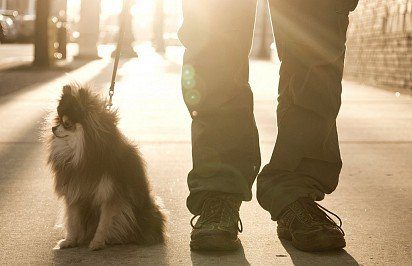
Despite the visible progress in the selection of the Pomeranian, American dog breeders continued to work on improving the breed, but soon abandoned the attempt to make the animals more miniature. A strong decrease in body proportions led to the inability to continue the race, which negatively affected the breeding of dogs. Experimentally, it was found that maintaining the blue color of Pomeranians is the most difficult, and white Spitz looked larger than their relatives with a different coat color and therefore participated in exhibitions less often.
It is worth noting that it was on the American continent that the correct name was assigned to the breed – orange. The rest mistakenly called the Spitz either German or Dwarf. Now this trend is less common, although in the classification of the FCI (International Cynological Organization), Pomeranians are still registered under the name “German Spitz”.
This breed has come a long but interesting way from service northern dogs to favorites of noble people. Now Pomeranians are regular participants in various exhibitions and events. Animals delight with their mind, perky character and thick coat inherited from their ancestors. Compact size combined with a big heart make Pomeranians great companions and true friends.
Video: Pomeranian
Appearance of the Pomeranian
The Pomeranian belongs to the dwarf dog breeds. However, his dense physique and strong muscles do not detract from grace and grace. The FCI standard suggests that the height at the withers should be equal to the length of its body and be 18-22 cm.
The mass of oranges is proportional to their growth and ranges from 1.5-3.2 kg. Show representatives of the breed should ideally weigh 2 kg.
Head and skull
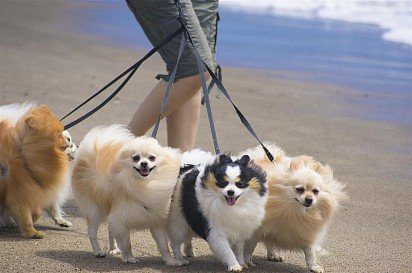
The Pomeranian has a small head. The broad back of the skull tapers towards the nose, thus forming a wedge. The rounded forehead contrasts with the underdeveloped occiput. Cheekbones are practically invisible due to chubby cheeks.
Muzzle
A well-defined stop is a characteristic feature of a narrow muzzle, which is half the size of the skull. A small and neat nose is always black (may be brown in orange and red specimens). The same is true with lip color.
Ears
The triangles of the ears “stand” close to the top of the head. They have a sharp and hard tip. The Pomeranian’s ears are droopy at birth, but “raise” as the dog matures.
Eyes
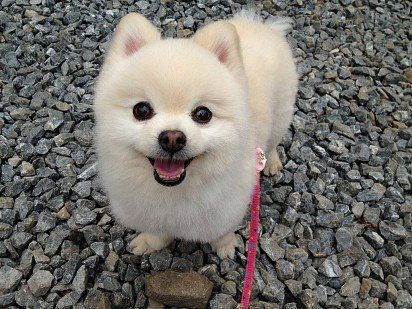
Small dark eyes set obliquely. The shape is mostly almond-shaped or oval. Eyelids black; dark brown pigmentation is acceptable in dogs of the same color. Pomeranian has a lively and even mischievous look, which gives the animal a resemblance to a fox cub.
Jaws and teeth
The upper jaw of the Pomeranian overlaps the lower, thereby forming a correct scissor bite. Direct and pincer bites are not recognized as a defect. There are 42 teeth. The absence of premolars in the Pomeranian is uncritical.
Neck
The strong neck is distinguished by a slightly arched shape. The length is average, the so-called suspension is absent. A high landing is masked by a lush “frill”.
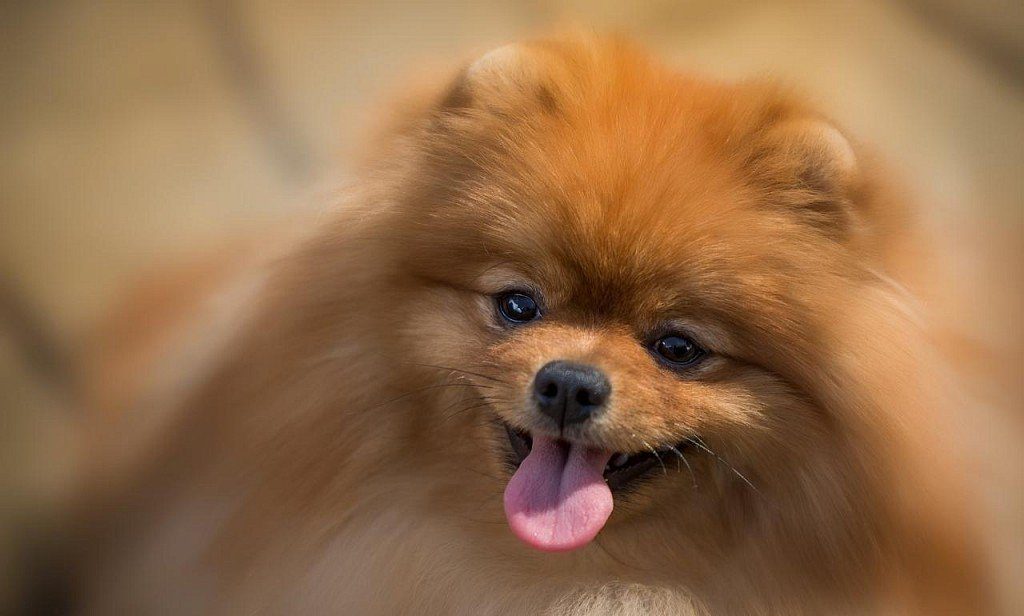
Frame
The neck of the Pomeranian ends with the withers, and that ends with a short back. The loin, in turn, passes into a short, unsloping croup. The chest is developed. The abdomen should be tucked up, and the ribs should be well palpable.
Tail
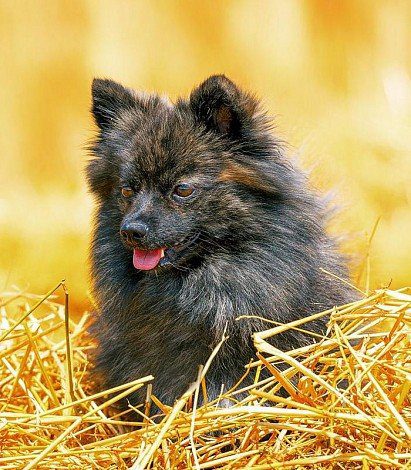
It has an average length, is located relatively high. Due to the fact that the tail ring lies on the back, the dog looks miniature and rounded.
Forelimbs
Set wide. The shoulders are well muscled. Tightly fitting fingers evoke associations with a neat cat’s paw. The black shade of the pads and claws is characteristic of all representatives of the breed, except for red, cream and brown.
Hind limbs
parallel to each other. The thighs and lower legs are in equal proportion. The small paws are not as round as the forelegs. The fingers are compressed and end in black claws and pads (brown in some dogs).
Movement style
Pomeranian moves easily and plastically. The hindquarters have good drive. The dog springs a little when walking.
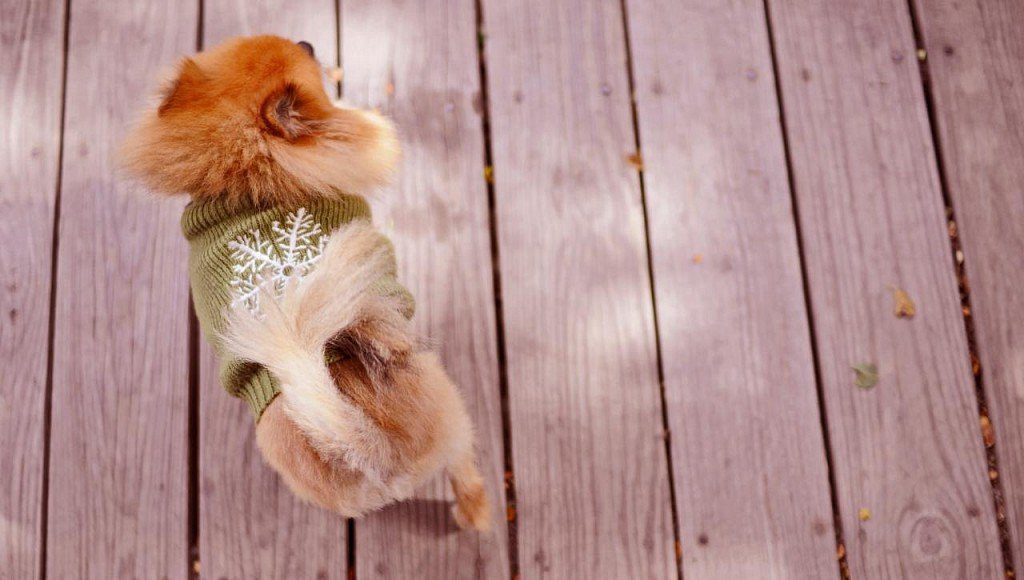
wool cover
Pomeranian wool hides a dense undercoat underneath. Short soft hair covers the head, perky protruding ears and the front side of the limbs. The rest of the body is characterized by long, straight hair, which is not characterized by the presence of curls and waves. The shoulders and coat of the dog are hidden by the mane. The fluffy tail merges smoothly with the “pants” on the hind limbs.
Color
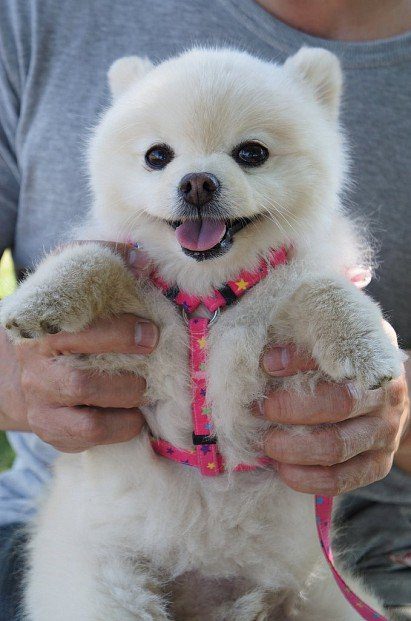
The Pomeranian breed has ten coat colors: white, blue, black, cream, orange, sable, blue or black and tan, chocolate and two-tone. Spotted coloration implies white as a background color and an even distribution of markings.
Any deviation from the standard is considered a breed defect. Among them:
- a sharp narrowing of the skull from the back to the nose;
- head shaped like an apple or too flat;
- watery eyes bulging, their light shade;
- corporal pigmentation of the eyelids, nose and lips;
- waddling gait, “prancing”;
- double ring at the end of the tail;
- pronounced stop.
In addition, there are also disqualifying vices:
- aggressive or cowardly behavior;
- unprotracted fontanel;
- half erect ears;
- overshot and/or undershot;
- eversion or inversion of the eyelids;
- clear borders of white spots.
In Pomeranian males, two developed testicles must be completely in the scrotum.
Photo of an adult Pomeranian
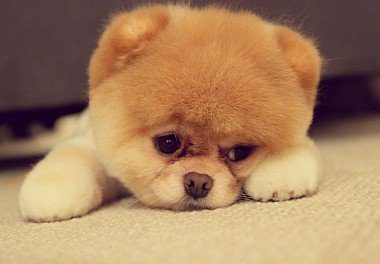
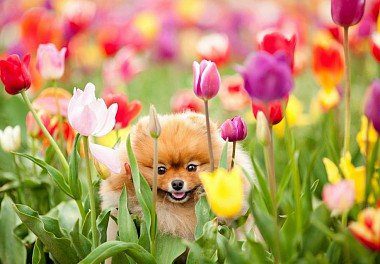
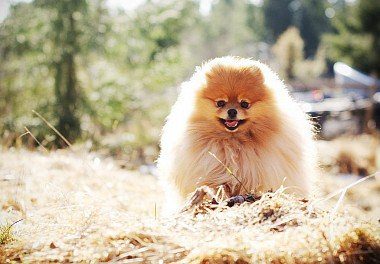
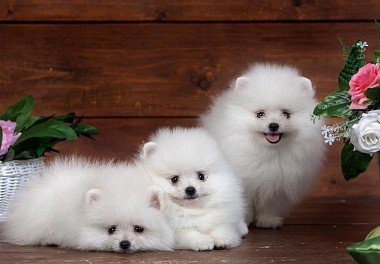
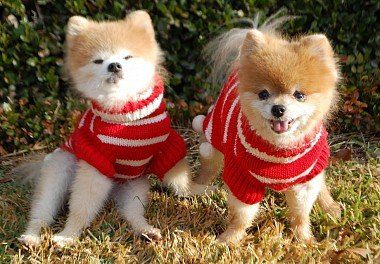
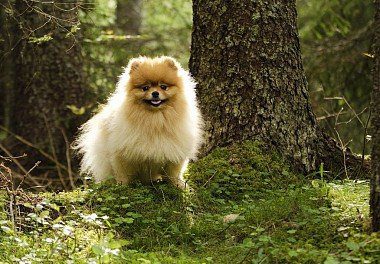
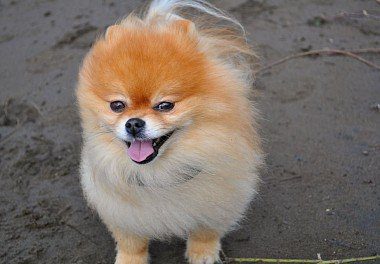
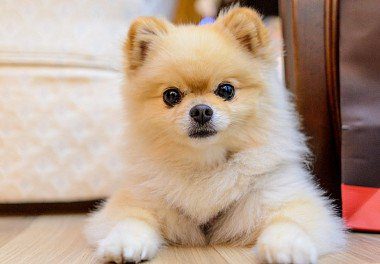
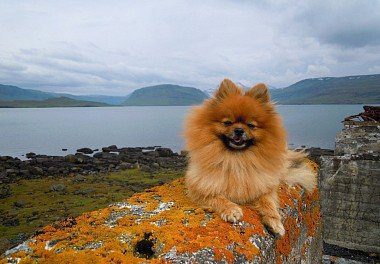
The nature of the Pomeranian
The owners of charming Pomeranians note their good-natured nature, unbridled curiosity and cheerful enthusiasm with which fluffy koloboks explore the world even within the apartment. You should not start a Spitz as a decorative dog with which you can lie on the couch and watch your favorite movie. The Pomeranian prefers active games, and a walk in the fresh air is a delight. A dog of this breed will gladly bring a thrown ball, chase a dove crouching on the curb and rush to protect the owner from the “threat”. In general, a fun walk with a fluffy fidget is guaranteed.
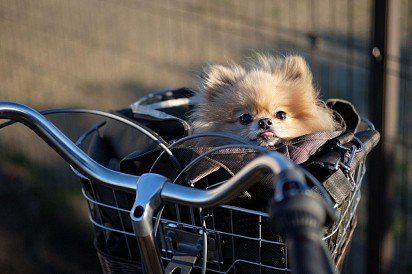
The Pomeranian easily finds a common language with the owner, adjusting to his lifestyle. The faithful dog will never make noise early in the morning if you prefer to get up around noon, and will follow on your heels as soon as you wake up. Representatives of this breed are attached to the family in which they live, and can be sad if they are not given proper attention. Many Spitz owners note that returning home after work is fraught with a remarkable manifestation of love from a little bear cub. The dog will always be with you: while preparing dinner, taking a shower and sleeping at night. Some animals can sleep in a room with their owner (sometimes next to it on the bed) in order to please in the morning with another portion of affection and a loud call to take a walk in the city park.
The Pomeranian is prone to barking and responds with a boisterous “voice” to any suspicious rustle. This dog makes an excellent watchman who will scare away an intruder, forgetting about his miniature size. Sometimes the Spitz can bark for no reason, and then the owner will have to gently correct the habit of his pet.
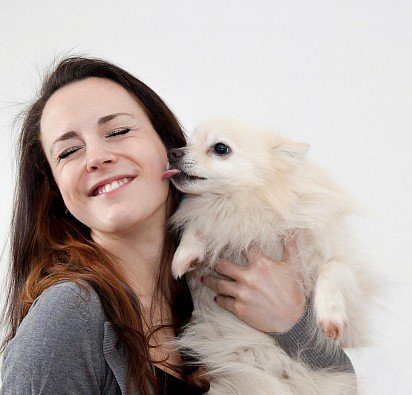
If you are planning to adopt a Pomeranian as a child friend, the attitude towards the new family member should be conscious and careful. The Pomeranian will gladly join the children in a fun game, if he is used to their company as a puppy. Otherwise, the dog will prefer to remain an outside observer.
The Pomeranian behaves with restraint with strangers and only in the absence of proper upbringing can bark at a random passerby. The dog reacts warily to the general tenderness and not everyone will be allowed to run their fingers into the soft plush fur.
Spitz gets along well with other animals, but sometimes shows a habit of dominating relatives. The appearance of a second dog in the house is an alarming bell for the Pomeranian: you need to show the owner and the new fluffy rogue who is in charge in the house. However, if the spitz grew up with other animals, these problems will not arise. Carefully introduce your pet to decorative rats, hamsters, parrots and others: the hunting instincts of an orange can appear at the most unexpected moment.
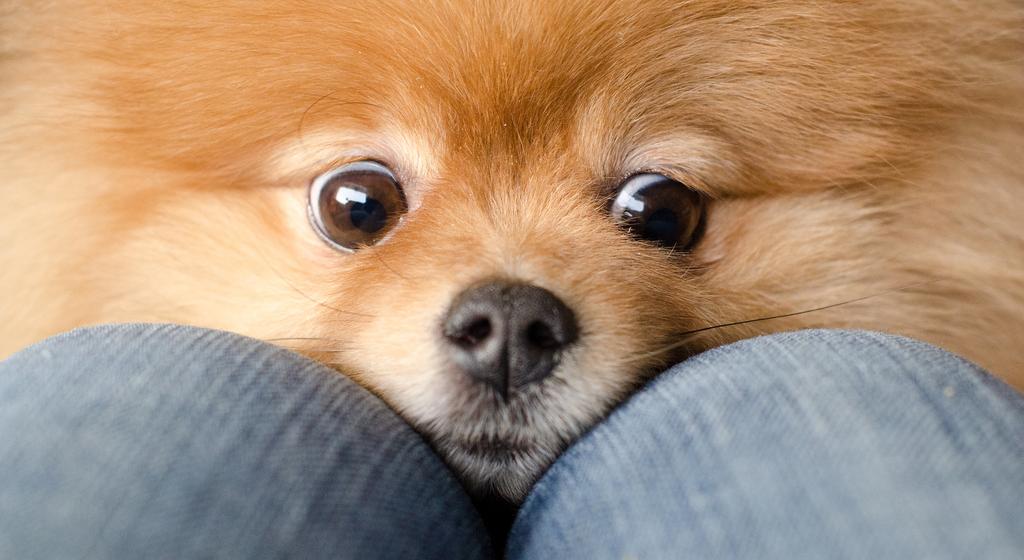
Education and training
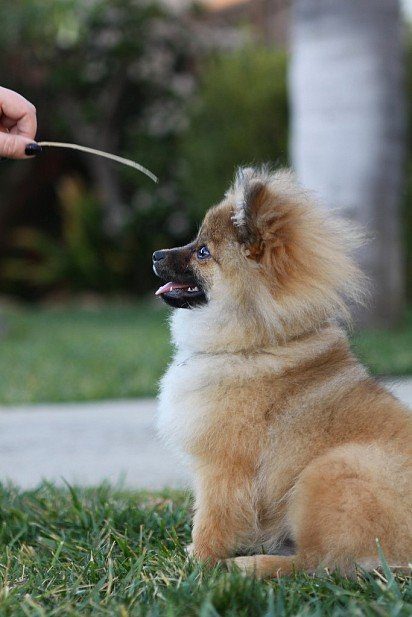
The Pomeranian is naturally endowed with a highly developed intellect, which greatly facilitates the learning process (compared to other decorative dog breeds). However, a stubborn and independent nature can become a serious obstacle to the execution of commands. Forget about traditional training methods: in this case, they do not work. Your pet will have to find a special approach.
The main thing in raising an orange is to forget about its touching appearance. Often the owners of these dogs treat them like children, considering their pets small and still unable to perform complex commands. The Pomeranian needs a confident owner who can show strength of character and has leadership qualities. Only in this case the dog willingly gives in to training, learning both basic commands and tricks worthy of circus performances. If a Pomeranian considers himself a step above you, he will defiantly refuse to listen to any exhortations and requests to sit, lie down or speak out.
Gentle handling and tasty rewards are the most effective approach to training this breed. The Pomeranian does not like criticism and responds to cruelty or disrespect with waywardness, insolence or even aggression. A naughty dog will bring a lot of trouble to the owner, so first you need to teach your pet to perform the simplest actions: sit, lie down, approach the leg, go to the place. The command to stop barking is no less useful: not everyone will like the high and sonorous intonations of the “voice”.
In general, dog breeders characterize the Pomeranian as a quick-witted creature that is easy to train with the right approach to training. The only thing that can cause problems is toilet training. Due to the peculiarities of the structure, it is difficult for the Pomeranian to retain the contents of the bladder for a long time, so the dog can relieve himself right in the apartment. However, if you have the patience to teach your pet to ask for a walk on time, the cleanliness of your home will remain intact. Particularly creative dog breeders teach the Spitz to go to the cat litter box.
Care and maintenance
Long and fluffy hair is the main asset of the Pomeranian, so the lion’s share of care falls on thorough combing. Representatives of this breed molt twice a year. At the same time, the first molt occurs in the fourth or sixth month, when the “adult” wool cover replaces the puppy’s down. In Pomeranian females, molting begins during estrus and after childbirth, so do not be afraid. However, permanent bald spots should make you think about changing your pet’s diet and choosing new cosmetic products for hair care.
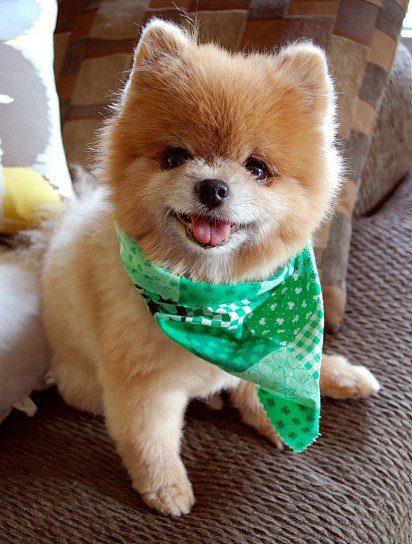
It is not recommended to bathe Pomeranians more than once or twice a month (as needed). To do this, use a diluted shampoo for long-haired breeds: a concentrated product may have the opposite effect. Be sure to treat the dog’s velvety coat with air conditioning and dry it thoroughly with a hair dryer. Use a comb with long teeth or a slicker brush. Please note that when combing, the wool should be wet, so you should always have water softened with the same conditioner on hand. The molting period requires more thorough combing with a comb.
Thinning scissors are used to cut an orange. Basically, the coat is shortened to maintain a neat appearance of the dog. For hygienic purposes, Spitz owners trim the space between the paw pads and the area under the tail. Do not use the machine under any circumstances! This will disrupt the natural structure of the hair, which in the future is fraught with the regular appearance of tangles in the coat.
Pomeranian teeth are cleaned with a special paste 3-4 times a week. To do this, you can use a brush or nozzle. A piece of bandage wrapped around your finger will also work. In order to avoid the appearance of tartar and further treatment, it is recommended to include solid food in the pet’s diet.
The nails are trimmed with a toy nail clipper. Do not forget to process the resulting sharp edges with a nail file. Paw pads also deserve care: rub vegetable oil into them – and painful cracks will never disturb your pet!
Pomeranian nutrition should be balanced. For this, dry food with the maximum content of essential minerals and vitamins is suitable. Natural food is no less useful, but in any case, do not treat the spitz with food from the table:
- sweets;
- milk;
- smoked meats;
- flour products;
- fatty and spicy foods;
- river fish.
Food should always be fresh and at room temperature. Do not forget about the sufficient amount of water that needs to be changed daily.
Health and disease of the Pomeranian
Northern origin has awarded the Pomeranian with good health in comparison with other dwarf breeds. Even in old age, these brisk cubs feel great.
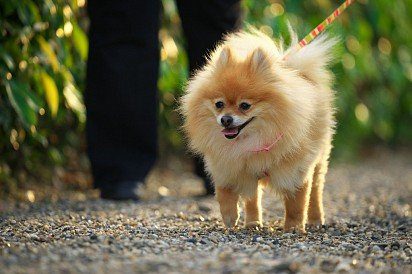
The thick coat of wool explains the predisposition of Pomeranians to the formation of tangles. Some dogs suffer from alopecia – baldness of certain parts of the body. Especially frightening is the so-called black skin disease, which is fraught with complete hair loss and pigmentation of the skin. However, the disease itself does not harm the health of the Spitz, being limited only by the unattractive appearance of the animal.
Merle Pomeranians are most susceptible to disease. They are born deaf, with increased intraocular pressure and coloboma – a defect in the membrane of the eyes. There are disturbances in the functioning of the cardiovascular, musculoskeletal and nervous systems.
The characteristic diseases of the Pomeranian include:
- ligament weakness;
- subluxation of the knee joint;
- dysbacteriosis of the gastrointestinal tract;
- colitis and gastritis;
- cough caused by spasm of the larynx;
- tearing;
- atrophy of the retina and lacrimal duct;
- hypoglycemia;
- hydrocephalus.
Rare conditions include swelling and undescended testicles in male dogs.
How to choose a puppy
Before you take a new pet into the house, you need to decide on its future fate. Show class puppies are the best way to participate in exhibitions. Breed-class dogs are bought mainly for breeding. If you see a wonderful friend and companion in a Pomeranian, pay attention to pet-class puppies – and you won’t regret it.
The future owner of the dog must understand that there is no one hundred percent guarantee. Not all representatives of the show class take pride of place at exhibitions, just as not all females of the breed class are distinguished by fertility. If this is important to you, it is better to take the Pomeranian from experienced breeders who pay due attention to the correct breeding of dogs. Although we must not forget that even from a pet-class baby you can grow a champion if he fully complies with the breed standard.
When choosing a Pomeranian puppy, you need to pay attention to his health and appearance. A healthy baby should be lively, playful and frisky, show curiosity towards you and not be afraid of an outstretched hand. The size of the puppy should not determine your choice: even the smallest specimen can grow into a large dog.
The sex of the baby in most cases determines his behavior in the future. Males are distinguished by cockiness and stubbornness, while females are tender and accommodating, although there are exceptions.
Photo of pomeranian puppies
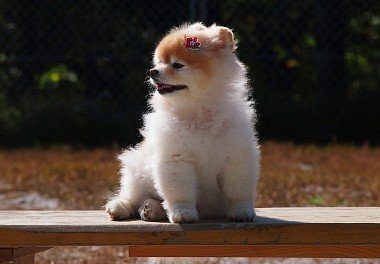
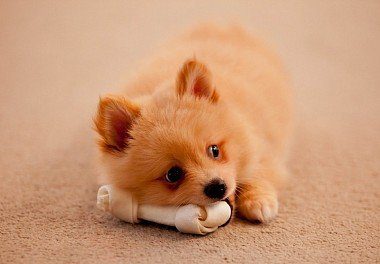
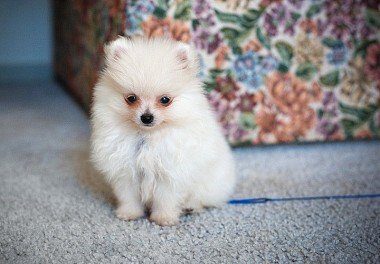
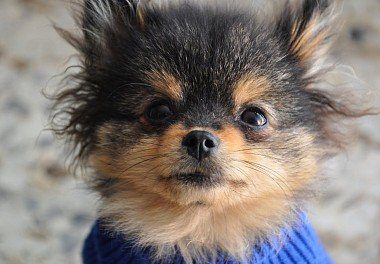
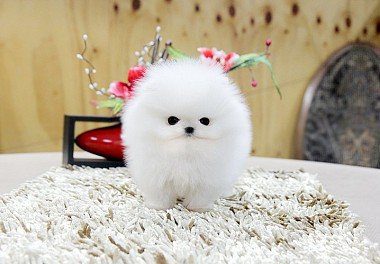
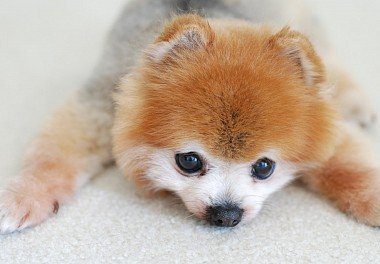
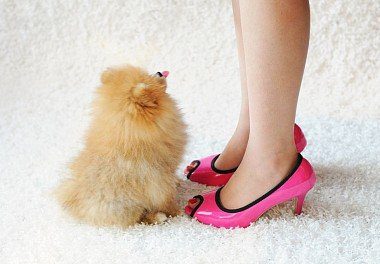
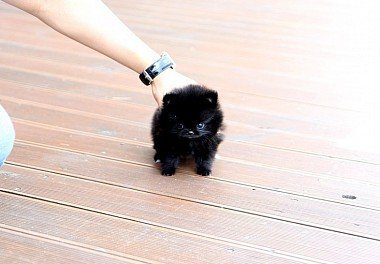
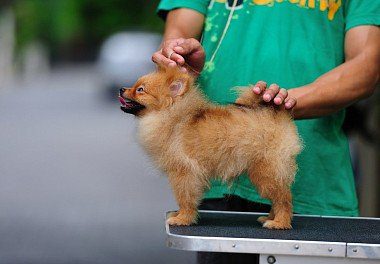
How much does a pomeranian cost
The price of a puppy depends on several factors. Offspring from elite females and males cost from 900 to 1800$. For 600-900$, you can take a Pomeranian from a more modest family. A fluffy baby without documents costs up to 250$. Remember that a female is valued several times more than a male.
It is best to buy a Pomeranian puppy in an official nursery that breeds this breed. So you get a true friend with excellent health and inexhaustible optimism.



